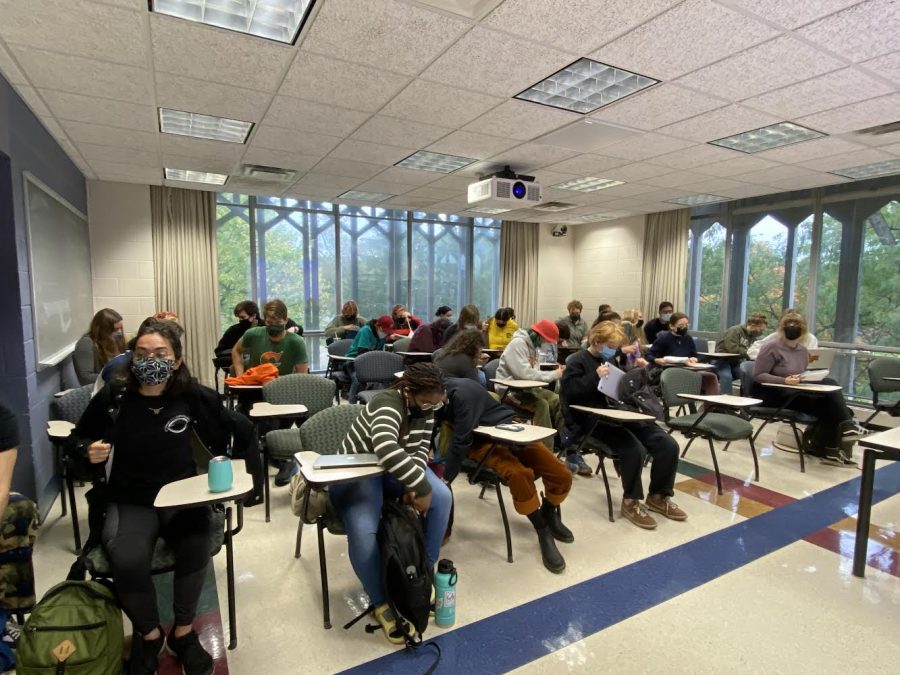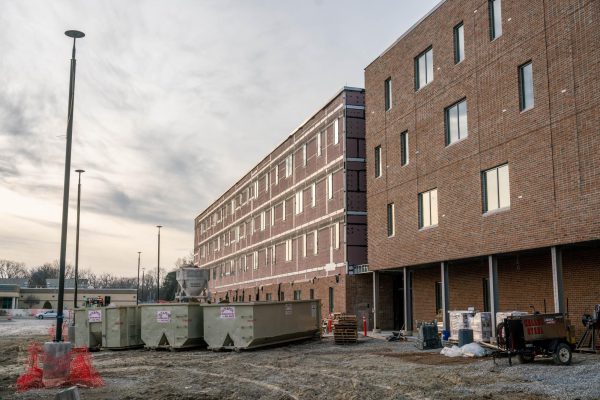Departments Adapt to Accommodate Large Number of First Years
Departments have worked to expand course offerings in response to a large first-year class.
Last week, Oberlin completed a census of students at the College and Conservatory and found that an especially large number of students are enrolled for the 2021–2022 academic year. The rise in enrollment has required academic departments across campus to adapt, particularly to accommodate the large number of first-year students.
This semester, Oberlin has 2,942 students, including 882 incoming first-years and transfer students who are new to Oberlin. While this is not a record number of students on campus, it is abnormal; in a traditional year Oberlin would likely have around 2,850 students on campus. In addition to a large number of students overall, the large first-year class has created an imbalance between upperclassmen’s and first-year students’ class sizes.
One of the reasons behind the large student population is an especially successful recruitment year for admissions. The other reason for the high level of enrollment is that students who took personal leaves returned to campus this semester at a much higher rate than normal.
“Those who took a personal leave last year, which was a lot of students for understandable reasons, returned at a higher rate than normal personal leaves — at about twice the rate,” said Ross Peacock, assistant vice president for Institutional Research and Planning. “In any given fall, we might expect 20 to 25 people who were on personal leave the prior fall to come back. This year there were about 107.”
In addition to people returning from personal leave, the College also had fewer students leaving campus for programs like Study Away. According to Peacock, close to 100 students normally take academic leave in the fall. This fall, however, only 49 students are studying away.
Having such a large number of students on campus meant that academic departments across the College had to stretch to accommodate everyone, especially after running at two-thirds capacity over the previous academic year. Last year, Oberlin split the academic year into three semesters to de-densify the campus and uphold social distancing.
Various departments adapted their course offerings to accommodate the large number of first-years seeking introductory-level and survey courses.
“In Politics, we were asked to increase enrollments, especially in 100- and 200-level courses, and we did that to accommodate student demand,” wrote Department Chair and Professor of Politics Kristina Mani in an email to the Review. “So almost all of our courses at those levels are either full or nearly full. It’s good in terms of exposing more of the first-year class to Politics courses, but it means we’re asking faculty to take on more responsibilities in a situation where it becomes hard to say no.”
The Economics department, which also offers an intro-level course that is popular with first-year students, had a similar issue. Former Department Chair and Professor of Economics Ron Cheung was surprised by how much interest first-years had in the course.
“ECON 101 [Principles of Economics] filled up a lot faster than we had actually expected,” Cheung said. “We always knew that it was a popular elective, especially for first-year students. … We thought that we would have enough capacity for first-year students by offering four sections of ECON 101 in the fall and three sections of it in the spring. As it turns out, it was a little bit difficult for first-year students to get some of those sections.”
Different departments employed various tactics to increase capacity in order to meet demand. For example, the English department asked a professor to switch from teaching a 300-level course to a 100-level lecture course to accommodate students looking for introductory courses.
“We added one 100-level lecture course, and we did switch out an upper-level course in order to make the change,” said Chair of the English Department Professor Gillian Johns. “But this professor is also teaching a 300-level course, so students are served at both the introductory and the advanced levels.”
In Economics, Cheung said that because lecture classes are generally large to begin with, faculty members are often reluctant to increase the caps on their class size. Instead, the department asked students to take ECON 101 at a less desirable time and even encouraged some students who had rigorous economics training in high school to start their economics career at Oberlin with a 200-level elective course.
Associate Dean of the College of the Arts and Sciences Elizabeth Hamilton said that department chairs rose to the challenge of making space for the large number of students taking classes this fall like they do every year.
“Departments worked very hard to ensure the right number of seats and range of course offerings this fall,” Hamilton said. “We have received positive feedback from faculty and students about access to courses at all levels.”
Despite being forced to make some alterations to their courses this year, faculty and staff are excited to see Oberlin back to running at full capacity.
“It’s more students than we planned for, which is better than fewer students than we planned for,” Peacock said. “I at least let out my breath.”







